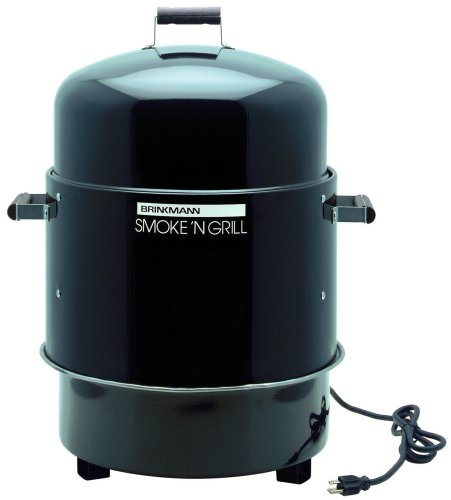To start we must first dispense with some basic concepts. Barbecue refers to low and slow cooking (think pulled pork, beef brisket, tender and juicy pork ribs). Grilling refers to hot and fast cooking (think steaks, pork chops, hamburger and various kinds of kabobs).
Generally speaking, barbecue refers to cooking with wood over a low heat in order to bring the internal temperature of the meat being cooked up to edible temperature slowly so as to avoid losing moisture (i.e. tenderness) from large cuts of meat. For example, cooking a 14 lb. beef brisket using the hot and fast method will most likely leave you with meat that is burnt on the outside and raw in the middle. Many barbecue cooks use indirect heat (i.e. fire source is offset from the cooking chamber) versus direct heat (i.e. first source is located in direct proximity to the cooking chamber) to help combat this issue.
Some examples of indirect-style barbecue cookers versus direct style barbecue cookers are the ever-popular "tank-style" cookers, such as those made by Ben Lang and David Klose; compared to the increasingly popular style of direct-style barbecue cookers like the Primo, Kamado and Big Green Egg, or simply BGE for short. There are many variations and options for cookers other than these specific manufacturers.
For most people, the choice of cookers is highly-dependent upon several factors including: 1) availability of wood and the cost of buying wood versus availability of charcoal (lump or briquettes), 2) room for storing the cooker when not in use, 3) budget, 4) experience, and 5) personal preference, or some might call it "ego".
Someone living in an apartment might find it difficult to justify the purchase of a big offset cooker, not only due to a lack of wood supply, but also for a lack of inside storage space when the cooker is not being used. Offset cookers range in price from the typical 0-hardware store budget conscious variety, to the top-of-the-line pits manufactured by a master pit builder that can get real expensive, real fast. Typically, someone with a single-family home with a garage for storage, or a storage shed of some type, would be more likely to own an offset cooker versus someone living in an efficiency-sized apartment in the heart of a downtown metropolitan area.
The compact size of a ceramic grill like the Big Green Egg and ready availability of charcoal might suit someone living in an apartment better. If portability is a consideration, the offset is less of an option, since it takes usually takes two or more people to comfortably move a small offset (without wheels), or even a vehicle to move some of the larger ones with wheels that can weigh upwards of 3,000 lbs.
Anyone can learn to cook some real fine bbq using any of the cookers mentioned above. The ever-popular "kettle" grill can turn-out some good 'que also, with some patience and understanding of proper fire control techniques. I've eaten some excellent bbq made by cooking a whole hog using a chicken wire framed up with metal rods and then perched on top of concrete blocks.
Some obvious advantages of using an offset smoker: 1) larger cooking area (generally speaking), 2) horizontal cooking surface and the ability to cook multiple meats at the same time, 3) bigger physical size creates a feeling of "machissimo", 4) "traditional" method keeps you highly involved in the cooking process because you have to constantly stoke the fire (some might also call this a disadvantage).
Advantages of the ceramic grills like the BGE, Primo, and Kamado: 1) easy to store, 2) ceramic construction holds heat very well, 3) ability to maintain higher temperatures allow use as a grill or smoker, 4) a little charcoal goes a long way, 5) with a little practice, temperature control requires very little effort/monitoring.
Always remember, it's the bbq cook and not bbq cooker or grill that determines the quality of your bbq. Which cooker you choose is matter of personal choice.
 |
Price : $171.83
|
Price : $171.83











